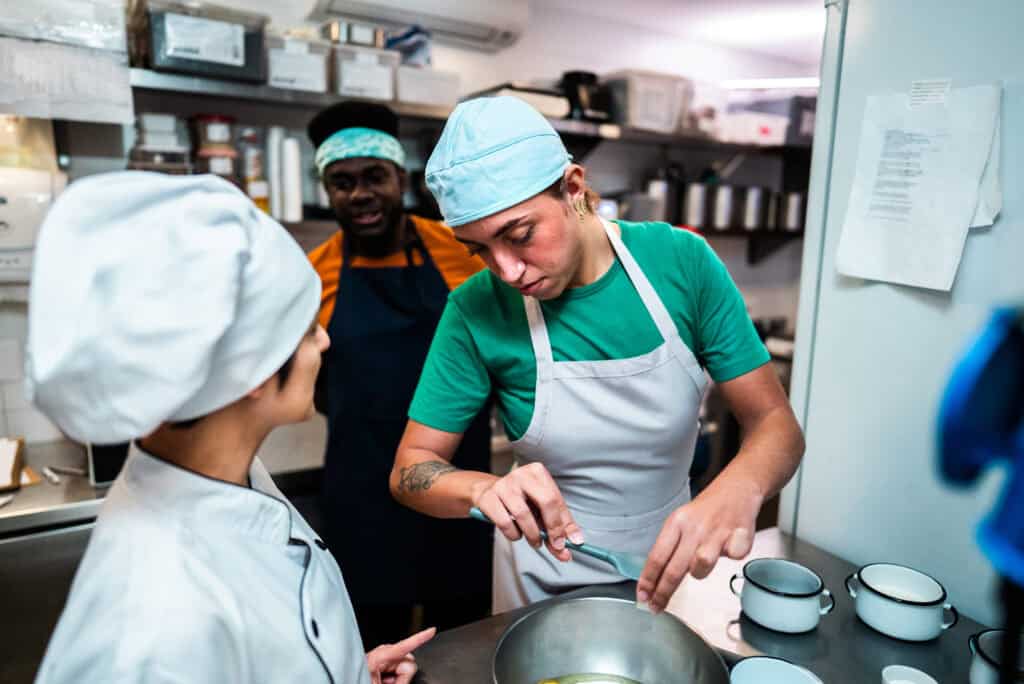Recognizing Unconscious Bias

Contributed by: People Working Well Learning Consultants
Do you know that you are biased?
You are biased and so am I. In the words of David Rock of the NeuroLeadership Institute, “If you have a brain, you have bias.” 1
The first step in breaking bias is recognizing that we all have it. And it’s not always a bad thing. In fact, our bias often serves us and can keep us safe. Of the 11 million bits of information that come at us at any given moment, our brains can only process about 40 bits. So, our brains work efficiently; they have evolved to create automatic mental shortcuts to help us determine two things:
- The information that we need to pay attention to (what is safe and what is dangerous).
- To where and whom we belong (our ingroup – who our “people” are).
Unfortunately, sometimes our brains get it wrong. That’s why it’s important to challenge our beliefs and biases. But if unconscious bias is, well, unconscious, how can we reduce its impact in the workplace and in life?
Types of Bias
There are many types of unconscious bias. Here are three that commonly show up in workplaces:
Similarity Bias: Simply put, we like people more who we think are more like us. This can impact who is hired and who gets the high-profile work assignments.
Conformity Affect: Also known as groupthink or the bandwagon affect, we tend to believe things more when other people do. Peer pressure and a desire to be “part of the winning team” play into this bias.
Confirmation Bias: This is an important bias to be aware of because we often use it to affirm our other biases; we seek out information that confirms our existing beliefs rather than information that challenges them.
Make the unconscious conscious
Once we recognize our biases, we can add tools to our bias-breaking toolkit. Here are three ways to reduce the impact of bias in your decision-making at work:
1. Slow down
When we move quickly, we are more likely to fall prey to unconscious bias. Pause to consider your decisions to lessen the impact of unconscious bias. Also, pay particular attention to your choices when you are feeling tired or stressed; these are the situations when we fall back into old habits.
2. Build practices into your decision-making processes
Recruitment is an area where unconscious bias often creeps in, even when we don’t think it does. As we have seen with similarity bias, we can tend to favor applicants who are like us. But you can take practical steps to reduce this bias. For example, ensure the wording of your job ad does not favor one group of people or another (for instance, use words that are gender neutral). Use an interview panel and establish job-specific criteria to assess candidates.
3. Increase your exposure to biases
Learn more about cultures and diversity groups by reading books, watching documentaries, and visiting cultural centres.
Knowledge is a powerful tool. The more we learn about unconscious bias, the more we learn about ourselves and others. And understanding is vital to inclusive and equitable workplaces and communities.
A Real-World Example
“Counteracting unconscious bias is a good reason to seek a second opinion when interviewing job candidates. I have to be sure to second guess myself when I’m ready to hire somebody who fits my preconceived notions of what a “good server” or a “good cook” looks like (and when I’m ready to pass on a candidate who doesn’t). These stereotypes that I have are the product of my limited experiences, which are in some part shaped by the prejudices of all of the managers I’ve ever worked for. Many of them probably hired me because I reinforced their own prejudices! Despite my perception that certain “types of people” make good servers, or good cooks, I am the first to admit that every restaurant I’ve ever worked in has been in some way dysfunctional. The only way that I can make my work environment better than those is by being aware of the unconscious actions that built them, and taking steps to make sure that the decisions I make are conscious and inclusive. That often requires a diversity of opinions to help me see the whole picture more clearly.”
References:
- NeuroLeadership Institute. (2022). Your Brain At Work LIVE –S7:#06 – SEEDS of Change: The Path to Breaking Bias. https://neuroleadership.com/podcast/s7e06

Diversity, Equity & Inclusion Lunch & Learn
Learn to identify the hidden aspects of diversity and apply this understanding to advance equity, foster inclusion, and support mental wellness in the workplace.